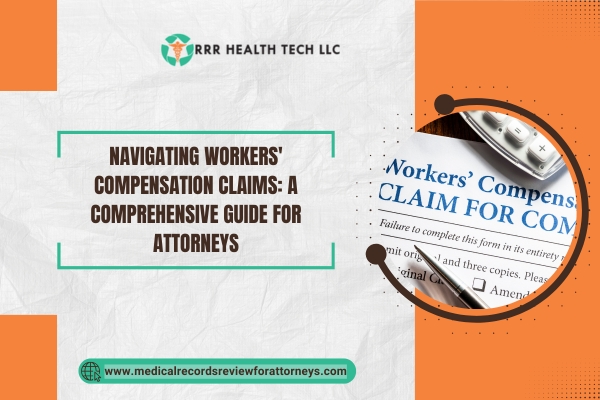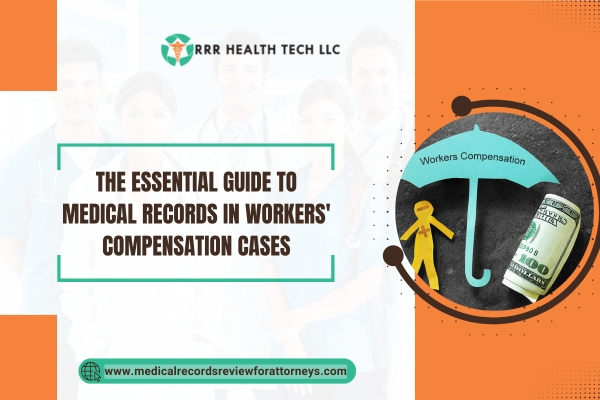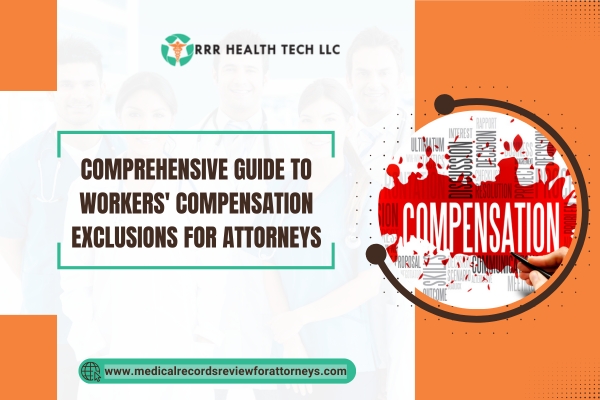
Introduction
Employees who get hurt or fall ill while working can be compensated through a workers’ compensation claim. The entire claims process is critical for lawyers who deal with clients on this topic. This article attempts to explain the entire workers’ compensation claims process from start to end while providing helpful tips for legal practitioners and emphasizing on the importance of documents like medical records.
Understanding Workers’ Compensation
In general, workers’ compensation provides monetary relief to employees in the event that they get injured during work. Most workers’ compensation covers the medical expenses, rehabilitation, and lost wages of a worker, which means everyone gets the necessary help during their recovery period.
- Key Points:
- Workers’ compensation laws vary by state.
- Employees typically cannot sue their employers for work-related injuries.
The Claims Process
2.1. Initial Steps for Injured Workers
• Medical Intervention: Any worker suffering from any kind of work-related injury should immediately seek medical attention. Also make sure to communicate the context of the injury to the health service provider.
• Informed your Boss: Employees are required to inform their superior of the injury within a specific timeframe of 30 days to retain their rights to benefits.
• Filing a Claim: Workers may be required to fill a specified form and submit it to the appropriate board of compensation New York’s Worker’s Compensation Board for example uses Form C-3.
2.2. Employer and Insurer Responsibilities
• Employer’s Responsibility: Employers are required to notify the worker’s compensation participating insurer within a specified time and after receiving information about an injury, for example, 10 days.
• Insurer Responsibilities: Within a limited time, for example, 14 days, the Insurer must, at minimum, provide the injured worker with a written statement of their entitlement and benefits, and commence any other necessary action.
The Role of Medical Records Review
Medical records review is a critical component in the workers’ compensation claims process. It involves the thorough examination of medical documentation to ensure that all relevant information is accurately represented and supports the claim.
- Benefits of Medical Records Review:
• The injury and treatment is not misrepresented.
• A lawyer obtained more comprehensive evidence which improves his claim in relation to the alteration of the life of a victim of the work injury.
Common Challenges in Workers’ Compensation Claims
- Proving the Injury: Insurers may dispute the validity of the claim, requiring substantial evidence to support the worker’s case.
- Documentation Issues: Incomplete or inaccurate medical records can hinder the claims process.
- Time Limits: Each state has specific time limits for filing claims, and missing these deadlines can result in the loss of benefits.
Case Studies
5.1. Case Study 1
• Overview: A factory worker developed a back injury when lifting a heavy piece of equipment.
• Solutions: After performing a thorough review of the medical records, it was found that the injury sustained by the worker was well documented along with the severity and impact of the job on the worker’s health.
• Challenges: The employer contested the claim on the grounds that the injury was already present.
5.2. Case Study 2
• Challenges: The insurance company first refused to honor the claim due to insufficient evidence to support the fact that the condition stemmed from professional work.
• Overview: A female executive sustained repetitive stress injury in the form of carpal tunnel syndrome from overuse of her hands.
• Solutions: The attorney acquired expert evidence and reviewed medical documents to effectively prove the injury was work related.
Conclusion
Understanding how to file a claim under the Workers’ Compensation Act is crucial for lawyers working with injured employees. Legal professionals can improve their clients’ chances of receiving just compensation by knowing how the system works and how medical records are provided, reviewed, and utilized. This guide should be used as a reference and for all attorneys who wish to actively participate in the workers’ compensation system on behalf of their clients.


